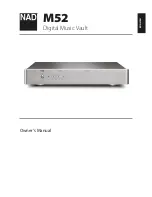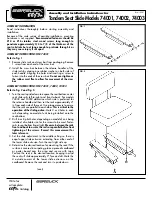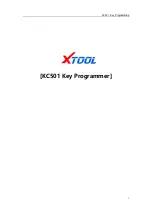
12
80834 REV ED
EN
EN
7. Continue fragmentation and suctioning of stone debris until remaining pieces are deemed small
enough to pass, or patient is stone free.
Note:
if the performance is weak, or after long periods of running, the system generator should
be turned off and then back on and re-tuned as described in Section 3.1 above.
Warning:
• The tip of the probe must be kept visible at all times when the transducer is activated.
• Do not contact mucosal tissue with the tip of the probe as tissue damage may occur.
Caution
• A back-up transducer and probe set should be sterilized and available prior to beginning a
procedure.
• Continuous irrigation and suction is necessary for proper operation of the CyberWand system.
Section 5.0 Cleaning, Disinfection and Sterilization
The following cleaning, disinfection, and sterilization procedures are recommended by Gyrus ACMI.
Use of any procedures not expressly recommended by Gyrus ACMI may adversely affect or damage
Gyrus ACMI devices and may void Gyrus ACMI’s Limited Express Warranty.
Follow all applicable bloodborne pathogen procedures as indicated by OSHA and/or your hospital
requirements when cleaning, disinfecting, and/or sterilizing instruments and accessories.
5.1 Generator
1. Turn off power to the unit and remove the power cord before cleaning.
2. Wipe generator cabinet, front panel, power cord, and footswitch with a sponge (or towel) lightly
moistened with a mild soap solution. Follow with a sponge (or towel) lightly moistened with clear
tap water. Dry completely.
3. Avoid using chemical or abrasive cleaning agents, which can damage the finish.
4. Wipe the transducer cable with a gauze pad (or towel) dampened with a mild soap solution.
Remove the soap solution with a gauze pad (or towel) lightly moistened with clear tap water. Dry
completely.
5.2 Probes
CyberWand probes are intended for single use. Discard after each procedure. Reuse may result in
breakage of the probe.
5.3 Transducers
After each use or prior to placing in a disinfectant or sterilizer, carefully inspect transducer and cable
for tears, cracks or other signs of damage. Do not use damaged equipment.
1. Remove the transducer connector from the generator and place the connector cap over pins.
2. Remove the cover (nose cone) of the transducer (
REF
CW-USLT) by unscrewing
counterclockwise.
3. Fully immerse both the transducer and its cover (nose cone) in an enzymatic cleaning solution
that is formulated to dissolve proteinaceous material. Follow the manufacturer’s written
instructions for dilution, temperature, and time. Warm water (100–120°F or 38–49°C) should
be used; water above these temperatures can make proteins difficult to remove from the
instruments. Do not use dishwashing detergents, skin cleansers, or any other cleaning agent not
designed to dissolve protein. Avoid using chemical or abrasive cleaners that could damage the
finish.
4. Scrub instrument with a soft brush.
5. Rinse all components thoroughly in warm tap water to remove all traces of cleaning solution;
then towel dry.













































